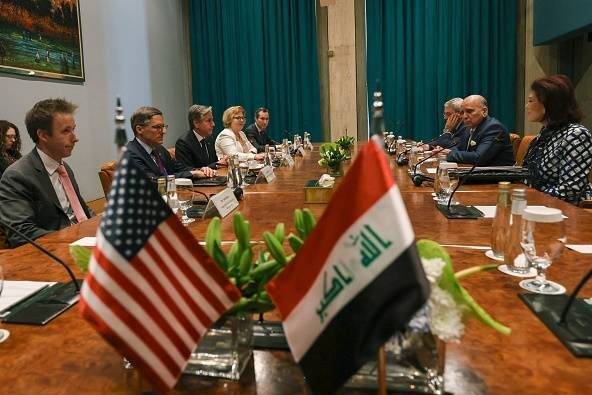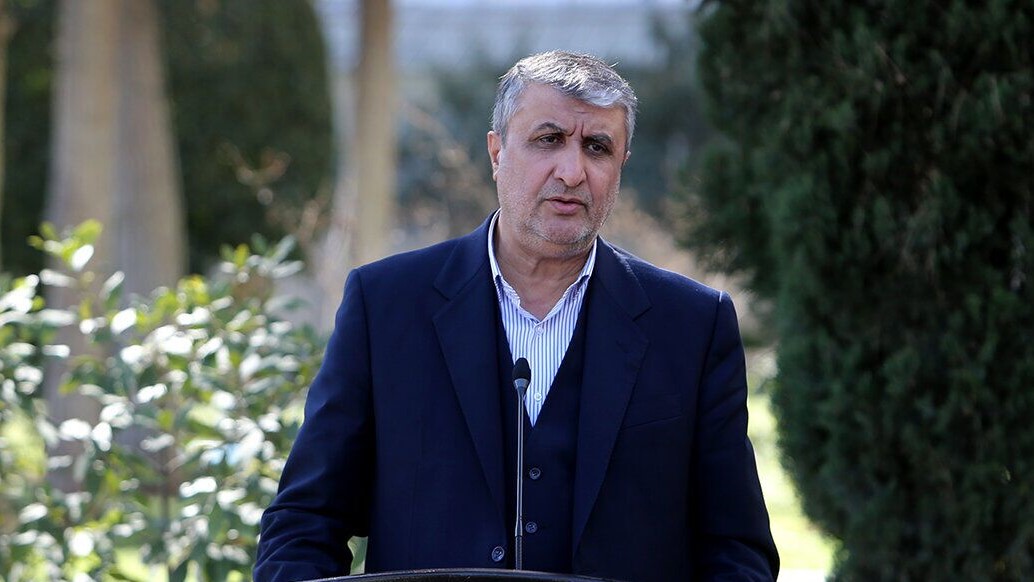NOVANEWS
 Esther (1865) is a painting by John Everett Millais depicting the central character from the Biblical Book of Esther.
Esther (1865) is a painting by John Everett Millais depicting the central character from the Biblical Book of Esther.
Esther was the Jewish wife of the Persian king Xerxes and when she pleads with him that his Vizier Haman plans to destroy the empire’s Jews, Xerxes allows them to defend themselves which leads to the killing of 75,000 Persians and the slaughter of Haman’s ten sons. Thereafter, Esther institutes a festival of redemption, ‘the holiday of Purim’ which is celebrated throughout the world until today.
By Arshin Adib-Moghaddam and Abbas Maleki
For Veterans Today
Would a nuclear Iran cause another Holocaust?
If we are to believe Israeli Prime Minister Benyamin Netanyahu and his supporters, then yes.
In his recent speech to AIPAC, Netanyahu once again referred to the Holocaust in order to make a case for war against Iran.
‘Some commentators would have you believe that stopping Iran from getting the bomb is more dangerous than letting Iran have the bomb,’ he said to a cheering crowd.
‘They say that a military confrontation with Iran would undermine the efforts already underway … and that it would provoke an even more vindictive response by Iran.’
This argument reminds Netanyahu of the correspondence between the World Jewish Congress and the US War Department in 1944 when the Americans argued that bombing Ausschwitz would ‘provoke even more vindictive action by the Germans.’
Similar references to a ‘nuclear holocaust’ were made by the former Israeli Prime Minister Ariel Sharon and the narrative has been picked up by the same neo-conservatives in the United States who supported the invasion of Iraq in 2003.
In February, Washington Post columnist Charles Krauthammer said that an Israeli strike on Iran is imminent given that the country was ‘established to prevent a second Holocaust, not to invite one.’
The current issue of the prominent neo-conservative outlet Newsmax headlines
with an article by the former US ambassador to the United Nations John Bolton, titled ‘Iran’s Plan for a Second Holocaust Must be Stopped.’ And there are many more examples thickening the plot.
In order to accentuate this link between Iran’s alleged acquisition of a nuclear bomb and the Holocaust, Netanyahu presented President Obama with the the Biblical Book of Esther, a biblical story in which the Jews of ancient Iran (Persia) were threatened with mass-slaughter by the Persian king Xerxes. What Netanyahu failed to add is that at the end of the story the Jews are not actually killed. Rather the contrary. Esther was the Jewish wife of the Persian king Xerxes and when she pleads with him that his Vizier Haman plans to destroy the empire’s Jews, Xerxes allows them to defend themselves which leads to the killing of 75,000 Persians and the slaughter of Haman’s ten sons. Thereafter, Esther institutes a festival of redemption, the holiday of Purim which is celebrated throughout the world until today.
For Netanyahu’s distinctly ideological reading of this story it is during Purim when ‘we will read how some 2,500 years ago, a Persian anti-Semite tried to annihilate the Jewish people.’ Netanyahu does not get his myths right (and that is by far more difficult than getting facts right). He fails to add that it was the Persians who got killed, and not Persia’s Jews. Iran is certainly not famed for its intolerance towards the Jews of the Persian empire: The Persian king Cyrus is mentioned in the Torah as a ‘saviour’ and ‘saint’ of the Jewish people and the Old Testament describes him as God’s ‘anointed’ and ‘chosen ruler’ because he gave refuge to the Jews when they were persecuted by the Babylonian king Nebuchadnezzar in the sixth century BC.
Indeed, reference to the book of Esther was oddly self-defeating.
Who are the historians advising Netanyahu on such matters? The tomb of Esther is in Hamedan (ancient Ecbatana), in the north-west of today’s Islamic Republic of Iran. The tomb draws pilgrims from all over Iran especially during Purim. The walls of the building explain the origins of Esther in Hebrew and they are not desecrated by Swastikas or neo-Nazi slogans as some of the Jewish cemeteries in Europe continue to be.
Netanyahu’s omission about today’s Iran are almost as blatant as an article published in Canada’sNational Post in 2006, when it was alleged by Amir Taheri that a new law would require Iranian Jews to ‘be marked out with a yellow strip of cloth sewn in front of their clothes while Christians will be assigned the colour red. Zoroastrians end up with Persian blue as the colour of their zonnar.’ The article ran alongside a photograph of a Jewish businessman in Berlin in 1935 with a yellow, six-pointed star sewn on his overcoat. After the lie was exposed, the National Posthad to retract the piece and apologize.
There are Stars of David publicly displayed in Tehran of course, for instance on the walls and signs of the Beheshtieh Jewish cemetery where dozens of holocaust victims are buried. In Tehran today there are 18 synagogues, several kosher butchers, Jewish schools and a Jewish hospital. Comparable conditions exist in other cities with a sizeable Jewish community. The situation for all minorities in Iran is far from perfect, but the Islamic Republic guarantees the political representation of the Jewish community in the Iranian parliament, a political right that is codified in the Iranian constitution.
The Jewish communities of Tehran, Shiraz, Isfahan, Boroujerd, and Yazd continue to be the largest in western Asia outside of Israel. In fact, the 30.000-60.000 Iranian-Jews can party harder than the countries majority Muslim population, given that their exempt from prohibitions on alcohol and attending mixed gender parties.
What is overlooked by Netanyahu and his historians is that anti-Semitism, scientific racism per se, is a particularly European phenomenon; that race theory developed out of the ideological laboratories of European modernity. There is no Iranian or Islamic theory of anti-Semitism. There maybe anti-Semitic sentiments of course, but these have never really morphed into a fascist ideology or a cod science such as ‘phrenology’ that identified Jews as sub-humans. Opposition to Israel is a political stance and has nothing to do with scientific racism which fed into Nazi ideology, especially in Germany. Being opposed to the policies of the state of Israel is not the same as being anti-Jewish. This is why even such a controversial figure such as the outgoing Iranian President Ahmadinejad received the support of self-admittedly anti-Zionist Jewish organizations such as Neturei Karta International.
In his speech to AIPAC, Netanyahu referred to 1944 to make the case for war against Iran. He gets his history wrong again. In 1944, at a time when Nazi Germany was plotting the final solution, Iranian diplomats were busy handing out hundreds of passports to European and Iranian Jews in order to facilitate their exodus to Iran.
This was the topic of a series sponsored by Iranian state TV in 2007.
It is based on the real story of the ‘Schindler of Iran’, Abdol Hossein Sardari, an Iranian diplomat stationed in Nazi occupied Paris who facilitated the escape of thousands of Jews to Iran and who gave refuge to them in the Iranian embassy.
The series traces the life of an Iranian student played by Shahab Hosseini, who also stars in the Oscar winning movie A Separation. He plays the role of an Iranian student who travels to Nazi occupied Paris where he falls in love with a French Jewish woman.
In the dictionary of the Nazis this romance would have been categorised by law as Rassenmischung (racial mixing) which was likened to Völkermord (national annihilation), in accordance with the cod science of the Nazis.
This is another example where contemporary Iran and Nazi Germany are worlds apart. Netanyahu and his supporters should honour this difference, not at least out of respect for the victims of the Holocaust who are scattered around the globe, including in Iran. Certainly, the majority of Israelis and Iranians want to live in peace.
To that end, the intrinsically interwoven narratives of the peoples of the region have to be acknowledged as such. Looking at the history of the area from a non-ideological viewpoint then, is a way to alleviate broader anxieties around the possibility to mitigate religious and ideational differences.









